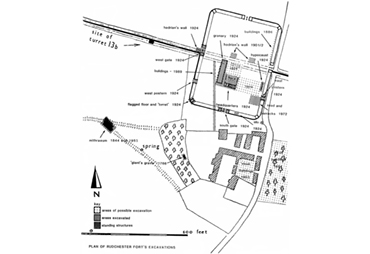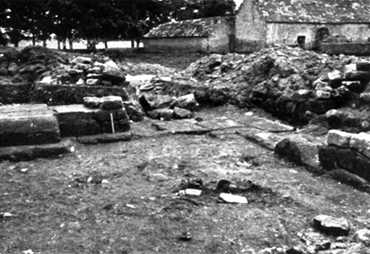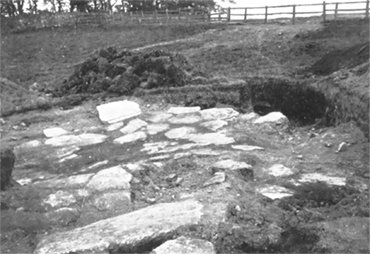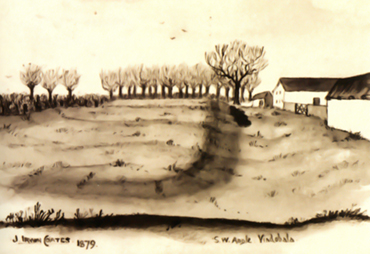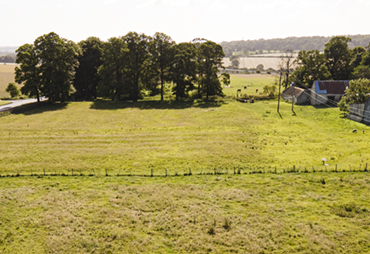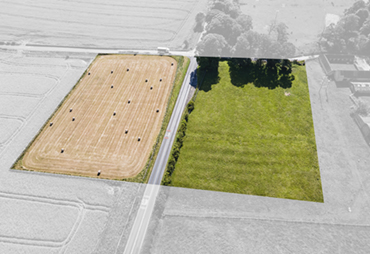Vindobala
Rudchester Fort (Vindobala or Vindovala) is the fourth fort along Hadrian's Wall, after Segedunum (Wallsend), Pons Aelius (Newcastle) and Condercum (Benwell). It is at the top of a flat ridge between the March Burn to its west, an ancient route to the ford at Newburn, and the Rudchester Burn to the south and east. Its Roman name, Vindobala or Vindovala, is translated as White Peak or While Walls, although the reason for the name is unknown. The outline of the fort is clearly visible in aerial photographs as it straddles the Military Road (B6318) (from Tynedale U3A. Hadrian's Wall Group and NorthOfTheTyne.co.uk websites).
The fort measures 170m by 120m (4.5 acres) and was garrison to around 500 Cohors I Frisiavonum recruited from lower Germany in the 3rd and 4th centuries AD.There were six gates and towers at each corner and also on either side of the main gates. The Vallum passed about 220m south of the fort, and there was a vicus to the south and south west.
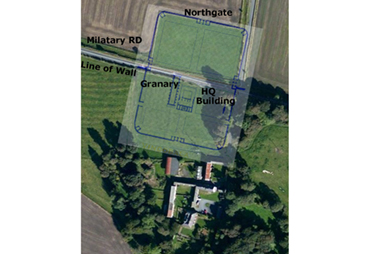
Rudchester Roman Fort (Vindobala)
Click here for a high resolution photograph in a new window:

Rudchester Roman Fort
Click here for more information in a new window:
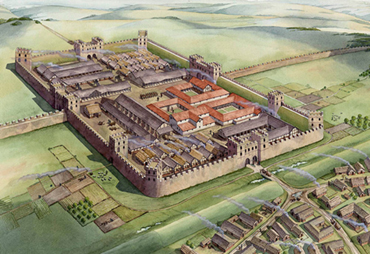
Rudchester Roman Fort
Click here for more information in a new window:
